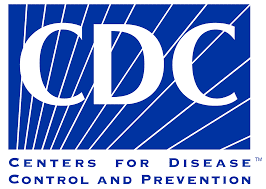A recent report by the US Government Accountability Office (GAO) highlights risks associated with the response to pandemics at the US Department for Health and Human Services (HHS) (1,2). These critiques go back the through several administrations and include the response to Zika, Ebola, H1N1 flu and others. They mainly involve issues around the national stockpile, strategy for testing and surveillance. While these critiques are clearly valid, I would like to add some perspective from someone (me) who has interacted with the various agencies of HHS over many years.
The first point I want to make is that HHS is a conglomerate of disparate agencies each with separate responsibilities and several of whom compete for funding. Agencies of HHS include the Centers for Disease Control, FDA, National Institutes of Health, Medicare and Medicaid, Indian Health Service and others. These agencies all are involved in healthcare either directly in terms of patient care or in terms of financing of care, regulation of drugs and public health functions. Back in the 1990s, I was a consultant to the Multi-agency Task Force on Antimicrobial Resistance. The task force published multiple reports, but little was actually accomplished. This was partly because of the competition between agencies and partly, in my humble view, because of the arrogance displayed by some. (Happily, even though we have a long way to go, various federal agencies have made a great deal of progress since the 1990s.)
By contrast, the Directors of HHS, throughout its history, have been drawn almost entirely from the worlds of business or politics – not from those involved in the delivery of care. To me, as someone who has been involved directly in patient care or in healthcare-related research, this makes no sense. It also makes no sense that the choice of leadership is not the subject of criticism as far as I can tell.
Secondly, we all need to understand that the public health system in the US is anything but . . Most of the key functions of public health including surveillance, needs assessment, delivery of services (and vaccines), execution of policy all devolve to states, counties and even to towns and rural districts. Medicare has made huge difference here by, for example, insisting that hospitals provide certain data within a limited time frame in order to remain certified for medicare reimbursement. Such an approach is difficult to promulgate beyond hospitals. The era of electronic medical records should facilitate such an approach, but the number and variety of different systems that exist today make data-sharing across the US a difficult task to say the least,
A recent viewpoint article in the Journal of the American Medical Association by Emanuel, Osterholm and Grounder emphasizes the problem of obtaining real-time data. The solution they propose is to establish essentially a national, parallel effort that would provide real-time data, would be administered outside local resources, but still able to connect with those resources using modern methods of data gathering (as I understand their paper). I agree that this would be much better than the current weak patchwork of data sources. When I was on the Forum on Emerging Infections of the National Academy of Sciences in the 1990s-2000s, we reached similar conclusions.
I agree with Emanuel et al that such a system would be far superior to our current situation. In fact, in most other developed countries, the solution they propose is a reality on a national level. Why? Because they have national health systems that incorporate public health measures and responses. These national health systems provide real time access to key data for policy-makers. I'd in fact, Centers for Medicare and Medicaid Services provide for this already in a limit way. My conclusion is that we must start there. In order for us to have a national public health system that works, we need a national health system (Medicare for all?) such as many other developed countries already have.
At the same time Emanuel et al propose that we establish thresholds of disease severity (hospitalizations, hospital occupancy rates, deaths) that would trigger mitigation measures. But clearly, such a system is not possible in the US today where the responsibility for public health devolves to local officials. I think it is unlikely that such legislation would pass congress and I think that even if it did, imposing such measures would be next to impossible in many areas of the country. Even under a system of national health insurance with real-time access to rapidly evolving disease, enforcing mitigation measures across the US, as it is today, seems an impossible dream.
Nevertheless, real-time disease surveillance is essential for intelligent policy-making. This is best achieved within the context of a national health insurance system. We need to prioritize that as a goal.




